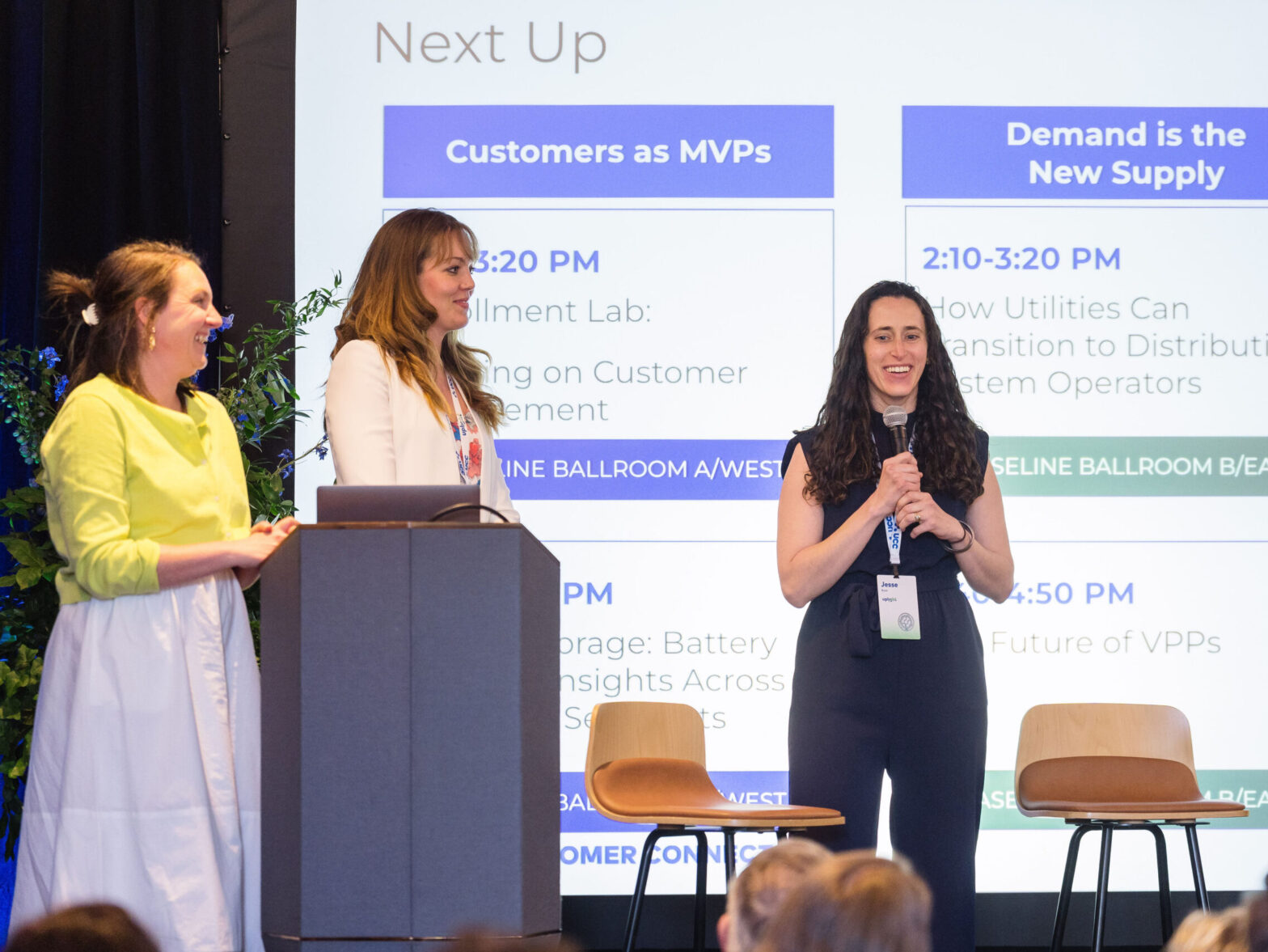This post was originally published on EnergySavvy’s website. EnergySavvy is now Uplight.
Working in the utility space, it seems like every day there’s another new company talking about how analytics-powered personalization can change the game. It’s completely understandable, because many utilities are just now beginning to recognize the incredible benefits to customer engagement and satisfaction that can be gained by delivering a more personalized experience.
But while many are dabbling in the area of personalization (or at least using the terminology), I have only come across a few that seem to be actually capable of delivering a personalization experience on par with the customer expectations that have now been set by companies like Amazon and Netflix. And that doesn’t come as a surprise, because true, analytics-driven personalization for a utility customer requires some very specific fundamentals and technology to deliver on those expectations, including accurately understanding your customer’s energy usage today, effectively integrating disparate internal and 3rd-party data, and delivering a consistent set of recommendations into the channel of each customer’s choice.
At EnergySavvy, we’ve done around 100 significant and successful deployments of utility-focused, cloud analytics, and engagement software to around 40 of the largest utilities in the country. And in the process, we’ve come to understand the three key technology areas and investments that must come together to enable end-to-end utility personalization and customer engagement. These technologies have been developed via countless learnings and iterations from real world utility deployments, and build upon the experience of over $20M in R&D and numerous PhDs and talented engineers from leading Seattle software companies like Amazon and Microsoft.
Want to take a crack at what’s needed for real utility customer personalization? Here’s where you’ll need to invest:
1. Understand how customers actually use energy
It may seem obvious, but personalization takes what people have actually done and, using the magic of predictive analytics, turns it into smart recommendations for something else they may want to do next. This means you’ve got to have the ability to understand what a customer has actually done before you can suggest what’s next. In the world of utilities, this translates to analytically understanding the when, what, where, and how of customer energy usage across (literally) millions of customers and billions of data points. The past generation of generic energy tips, customer portals, or merely having rich demographic data sets about customers is now being surpassed by approaches that are powered by actual customer intelligence that is based on who that customer personally is and how they use energy.
The problem is, in the modern world, customers are now engaging with a myriad of distributed energy resources and this is pushing up against the systems and methods of typical customer engagement. The increasing adoption rates of solar, storage, automation, electric vehicles, controllable LEDs, and numerous other technologies are changing what it means to be an energy consumer. It also means different customers have much different needs and propensities to adopt various offerings. Meanwhile, for the utility, these customers have different priorities for different customer offerings ranging from billing rates and financial assistance to green power or energy efficiency programs. Simple data about customers, or broad approaches to segmentation are just no longer sufficient–utilities needs to know how customers use their product, energy, to really engage.
One set of analytics techniques that we’ve found effective in extracting compelling insights from customer usage and behavior data starts with variable-base, degree-day models to disaggregate the data into heating, cooling, and baseload, followed by the application of clustering algorithms to the disaggregated data for intelligent customer segmentation. We can then use machine learning techniques to explore the high-dimensional feature space of relevant customer characteristics and automatically extract optimal matching criteria for peer groups specific to each utility or DER customer.
Advanced, predictive techniques like these allow us to get to an extraordinary level of granularity in understanding and extracting non-obvious insights from actual customer usage patterns, which can then inform more powerfully personalized customer recommendations and experiences.
Examples of these analytics approaches might be combining and analyzing hourly customer usage data and average daily temperature to generate a predictive model for estimating potential customer savings, or using machine learning techniques to more accurately identify the typical usage pattern a customer may fall within. A resulting insight might then be that a particular home’s weekday cooling usage during peak hours recently increased substantially, and they’re on a constrained feeder, which may provide an opportunity to recommend specific actions or offers to reduce peak load–and more importantly–their monthly bills.
2. Create a 360º view of the customer
Rich, timely customer usage insights alone are not enough to develop a true personalization capability. Fortunately, a utility has access to many other data sources in order to develop a complete picture of a customer’s journey.
These include a variety of internal data sources, such as customer and field service history, customer preferences, program enrollment, CIS, CRM, or AMI data. Then there are valuable and relevant 3rd-party data sources that can be leveraged, such as demographic info, psychographics, geographic, weather data, credit history, and more.
In theory, this is just a matter of bringing disparate data into a unified database. However, grizzled utility data veterans understand that these data systems are generally a mess. There can be shiny, new technologies co-existing with 1980s vintage IBM mainframes, schemas that that change erratically, inconsistent street address formats, customer systems that existed before email and the mobile phone, just to name few. In other words, utility data is messy and stuff breaks a lot. This means that basic database architectures and website approaches, too often, just don’t work out.
First, the right underlying design begins with a thoughtful and robust data architecture that’s designed from the ground up for these needs. In the case of EnergySavvy, our Customer Cloud uses a purpose-designed, microservices architecture and distributed storage approach which enables the use of both a core utility customer data model, and the ability to handle a wide variety of diverse and disparate data sources. This core data model manages the numerous complex relationships between meters, service endpoints, addresses, customers and parties that interact with those customers. The use and deployment of distributed management and processing technology allows remixing and analysis with other utility data in whatever scale or form is needed.
Second, stitching together disparate data into actionable insights available for real time operations requires fast, powerful, modern indexing and, ideally, a distributed, full-text search engine (something much more responsive than what you’d typically get from a traditional relational database). At EnergySavvy our technology, built upon Elasticsearch, enables us to securely analyze and surface data extremely quickly, on high scale utility data sources and do it much less expensively even than many large, branded solutions can offer (because they are built upon legacy approaches).
Combining this distributed data architecture with predictive, machine learning-based analytics creates, then, a strong foundation for personalization.
3. Don’t forget the user experience
Finally, it’s easy to get excited about cutting edge technologies such as machine learning, predictive analytics, and extremely fast search. And while these technologies are central to personalization, ensuring that customers have a good experience is perhaps even more important–otherwise they simply won’t engage.
Whether a customer visits the website on a mobile device, calls into the service center, logs into a MyAccount portal on their computer, or even asks a home assistant appliance like Amazon’s Alexa how they can reduce their customer energy usage, they should be able to receive a consistent set of prioritized experiences, tailored to their current energy usage behavior, channel and whatever life changes, needs, or challenges that usage implies.
This means that a utilities’ analytics engine must be interoperable by design with any utility customer interface or channel (phone, website, portal, Alexa, mobile app, IOT device, etc.). EnergySavvy accomplishes this through the use of industry standard REST APIs that are applied across all microservices. Further, our system has been purpose-built to make it lightweight and low-cost to integrate and securely deploy on any existing platform.
Regardless of whether you’re already an end-to-end Oracle shop, are in the middle of rolling out an SAP expansion, or have a patchwork hodgepodge of differing databases, systems and vendors–a lightweight, platform neutral system like this one can immediately begin delivering incremental personalization value to your customers. And, it can do it at a fraction of the time and cost of trying to extract similar capabilities from extending a CIS or other adjacent legacy system in expensive and custom ways.
Where to Begin?
After all this, I know that delivering actual utility customer personalization can seem like a daunting process, but by acting on these three fundamentals, it can be done. At EnergySavvy, we’ve accomplished it by spending nearly a decade and more than 10,000 meetings listening carefully to utility client feedback, by hiring really smart personalization experts and data scientists, by maintaining a commitment to platform-neutral deployment, and by pioneering the use of customer usage analytics to create a positive customer engagement feedback loop.
And while the combination of these capabilities may make EnergySavvy somewhat unique today as a SaaS company that serves utilities, the power these foundations can deliver should lead every utility to begin thinking more seriously about how they can make personalization the center of their customer engagement strategy.




